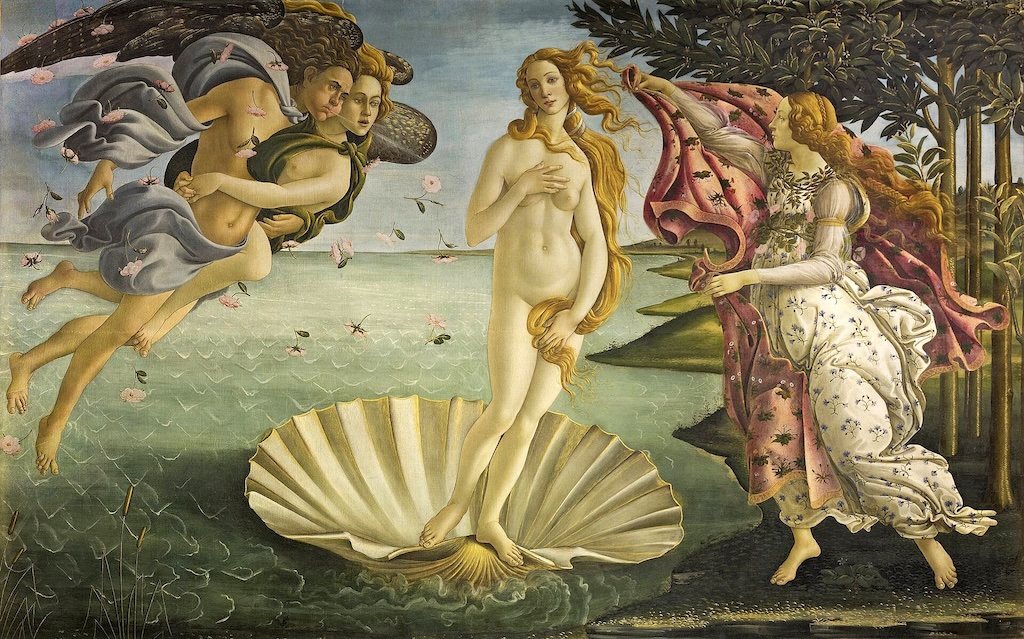One of the most iconic paintings of the Renaissance, “The Birth of Venus” by Sandro Botticelli remains a captivating masterpiece that draws art enthusiasts, historians, and visitors to the Uffizi Gallery in Florence. Created between 1482 and 1485, the painting portrays the mythological birth of Venus, the Roman goddess of love and beauty. This piece is not only admired for its artistic beauty but also for the rich stories, symbolism, and secrets hidden within it.
The Mysterious Commission
The exact reason behind the commission of “The Birth of Venus” is still unclear, but it is believed to have been commissioned by the wealthy Medici family, who were patrons of the arts during the Renaissance. The painting’s connection to the Medici family is thought to represent their political influence and commitment to promoting classical themes. Some art historians suggest that the painting was created for the Villa di Castello, a Medici residence, while others believe it was part of a series of works meant to celebrate the family’s power and intellectual pursuits.
The Myth of Venus
“The Birth of Venus” is based on the ancient myth of Venus, who, according to legend, was born from the sea foam after the god Uranus was castrated by his son, Cronus. Venus’ dramatic emergence from the sea, standing on a shell, symbolizes both beauty and divine birth. The scene Botticelli painted focuses on this moment, capturing Venus as she steps onto the shore, while Zephyrus, the god of the west wind, blows her gently toward the land.
The Influence of Neoplatonism
The painting reflects the ideals of Neoplatonism, a philosophical movement that flourished during the Renaissance. Neoplatonism sought to blend classical ideas with Christian beliefs, and Botticelli’s work embodies this fusion. Venus is often viewed as a symbol of divine beauty and spiritual love, transcending mere physical attraction. In this sense, her beauty in the painting is not only an aesthetic quality but a representation of a higher, idealized form of love that transcends the material world.
The Use of Classical Influence
Botticelli’s “The Birth of Venus” is deeply influenced by ancient Greek and Roman art. Venus’ pose, with her modestly draped hands, mirrors classical sculptures, such as the Venus de Milo. The entire composition of the painting, including the flowing hair and graceful movement, evokes the classical beauty ideals that were highly revered during the Renaissance.
The Iconic Shell
Venus stands on a large seashell in the painting, which has become one of the most recognizable symbols in art history. The shell is not just a backdrop to the goddess’s dramatic entrance; it is imbued with symbolic meaning. In ancient times, the shell was often linked to fertility, beauty, and the sea, making it the perfect vehicle for Venus’s birth. The shell, in fact, references the idea of rebirth and new beginnings, which aligns with Venus’s role in mythology as the goddess who governs love and creation.
The Contrasting Figures: Zephyrus and Chloris
The left side of the painting shows Zephyrus, the god of the west wind, holding Chloris, a nymph. Zephyrus’s role in the painting is to blow Venus ashore, while Chloris, a personification of spring and flowers, seems to release petals, symbolizing the rejuvenation of nature. The pairing of these figures with Venus is often seen as a representation of the cyclical connection between nature, love, and fertility.
The Mystical Symbolism of Venus’ Hair
Venus’s long, flowing hair is another fascinating aspect of the painting. In classical mythology, hair was often a symbol of beauty, and Botticelli’s depiction of Venus with her locks delicately cascading down her shoulders emphasizes her ethereal beauty. However, many art historians also suggest that Botticelli’s rendering of Venus’s hair was symbolic of purity and divine beauty, further enhancing the spiritual dimensions of the goddess’s character.
Botticelli’s Distinctive Style
Botticelli’s unique approach to painting sets “The Birth of Venus” apart from other works of the Renaissance. His use of delicate, elongated forms, as well as a combination of bright and muted colors, creates a dreamlike quality. The figures in the painting appear almost weightless, emphasizing the ethereal and divine nature of Venus. Botticelli’s mastery of lines and detail, especially in the flowing hair of Venus and the winds, showcases his talent for creating a sense of movement and grace in his works.
A Journey Through Time
Though created more than five centuries ago, “The Birth of Venus” continues to captivate audiences worldwide. Its symbolic representation of beauty, love, and divine purity speaks to universal themes that resonate across time. The painting’s influence extends beyond the art world, impacting literature, fashion, and even popular culture today.


